What 2014 Teaches Us About the Future of Payments and the Digital Economy
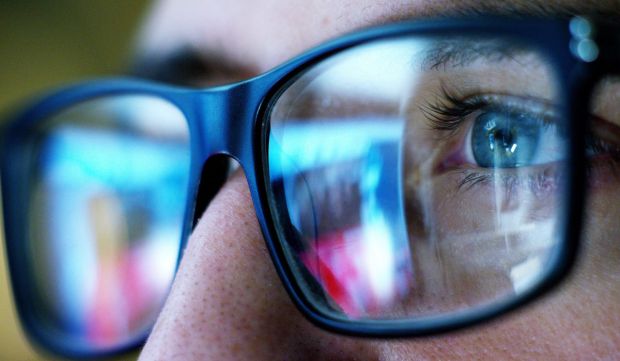
In 1963, Nobel-prize winning physicist Dennis Gabor wrote that the future can’t be predicted, but it can be invented. Gabor, who won the Nobel for inventing the hologram, explained in his book, “Inventing the Future,” that it is humankind’s ability to invent that shapes the future, even though its impact remains unknown at the moment of its creation.
In October of 2022, almost everyone wants to know what the future will look like, perhaps more intensely than ever. I was asked recently how I thought the future of payments and the digital transformation might look, given the complicated micro- and macro-market dynamics that pose forceful headwinds right now.
As I was reflecting on how to answer that question, I began to think about some of the things that had a profound impact on the evolution of the digital economy over the last decade. It was then that I was struck by how many of those things took root in 2014, seven years after the introduction of the iPhone and six since the launch of the App Store.
They came in just when the foundations for using connected devices, data, the cloud and digital payments began to come into their own.
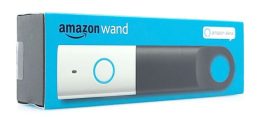
The Dash to Online Ordering
On April 6, 2014, Amazon introduced Amazon Dash, the wireless wand that consumers could use to scan the bar codes of the products in their fridge, pantry or medicine cabinet and create their weekly grocery shopping list. Rather than taking that list to the grocery store, Amazon had the items delivered to the consumer’s front door via Amazon Fresh: all paid for using their Amazon account linked to their Dash device.
A year later, on March 31, 2015, Amazon would simplify the ordering experience further with the launch of Dash Buttons for Prime Members. Universally regarded as the ultimate April Fool’s prank, pressing one of those product-branded wireless plastic buttons triggered an order — and a free delivery to the consumer’s home — when it was time for that product to be replenished.
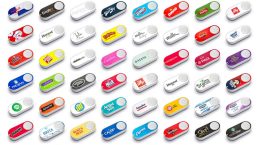 In perhaps one of the earliest examples of contextual commerce, Dash Buttons were intended to be placed in the environments where products were used, becoming a visual prompt to reorder when supplies were running low: the laundry room for Tide detergent, the kitchen cabinet for Bounty paper towels and Glad wrap, the baby’s room for Huggies, the medicine cabinet for Gillette razors or L’Oreal products, the fridge for Gatorade. The buttons also afforded a clever look into consumer behavior and way to collect data.
In perhaps one of the earliest examples of contextual commerce, Dash Buttons were intended to be placed in the environments where products were used, becoming a visual prompt to reorder when supplies were running low: the laundry room for Tide detergent, the kitchen cabinet for Bounty paper towels and Glad wrap, the baby’s room for Huggies, the medicine cabinet for Gillette razors or L’Oreal products, the fridge for Gatorade. The buttons also afforded a clever look into consumer behavior and way to collect data.
Fast forward to 2022, and the Dash Wand and Buttons are no more. Instead, there is Amazon’s Subscribe & Save platform on the Amazon site. There, consumers can buy name-brand products on subscription and CPGs can use the platform to offer digital coupons to incent purchases of their branded products, hedging the “trading down” to grocery store private-label products when consumers go to the store to shop.
Since 2014, Amazon has subtly shifted consumer behavior from making sure consumers never forgot to order often-used pantry and household staples to ensuring that consumers don’t have to remember to buy them at all — and now across a large swath of consumer household, grocery and beauty products.
According to PYMNTS data, Subscribe & Save has become the largest retail subscription service for consumers in the U.S., with ten percent of all U.S. consumers now ordering their name-brand household products and grocery staples using that platform and the registered credentials stored in their Amazon Prime account. This share will only increase as inflation-challenged consumers shift individual retail subscriptions to this platform — in fact, our latest consumer subscription study sees evidence of this happening already.
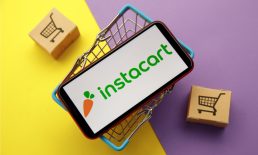
Also in 2014, then two-year old Instacart raised $154 million after seeing its revenue grow 15x year over year. In December the company valuation hit $2 billion, a quadrupling of its valuation in June of that same year.
Often regarded by grocers as a threat to their sales, Instacart powers the online purchase of groceries at stores, many of which are more accessible to consumers online then if they had to get in the car and drive to them. I wonder if what grocery stores really dislike about Instacart is that it creates more competition among them for the consumer’s food spend.
According to PYMNTS data, roughly thirty-seven percent of US consumers order groceries online, of which 36% used same-day delivery services such as Instacart. The growth of online grocery orders grew dramatically over the last two years because of the pandemic — but it has held its own even as most consumers have gone back to the grocery store to shop.
But that’s today. PYMNTS data also shows that shopping in the grocery store is the least favorite of all consumer shopping experiences — not only in the U.S., but across five other countries. As consumers shift more of their spend online to buy the things they no longer need to inspect, how consumers use grocery stores will certainly change. That extends to consumers who use SNAP benefits to shop for groceries and who can now use electronic versions of them to shop online instead of going to a grocery store.
Cars Got Connected
About 152,000 people were introduced to about 20,000 new products at CES in Las Vegas in 2014, including the perfunctory supply of robots, wearables, video game consoles and high-tech gadgets. Perhaps not as headline grabbing as the Toyota electric 3-Wheel iRoad, which never saw the commercial light of day, was the introduction of 4G LTE capability inside of any car powered by the Android OS and Qualcomm’s Snapdragon Automotive Solutions.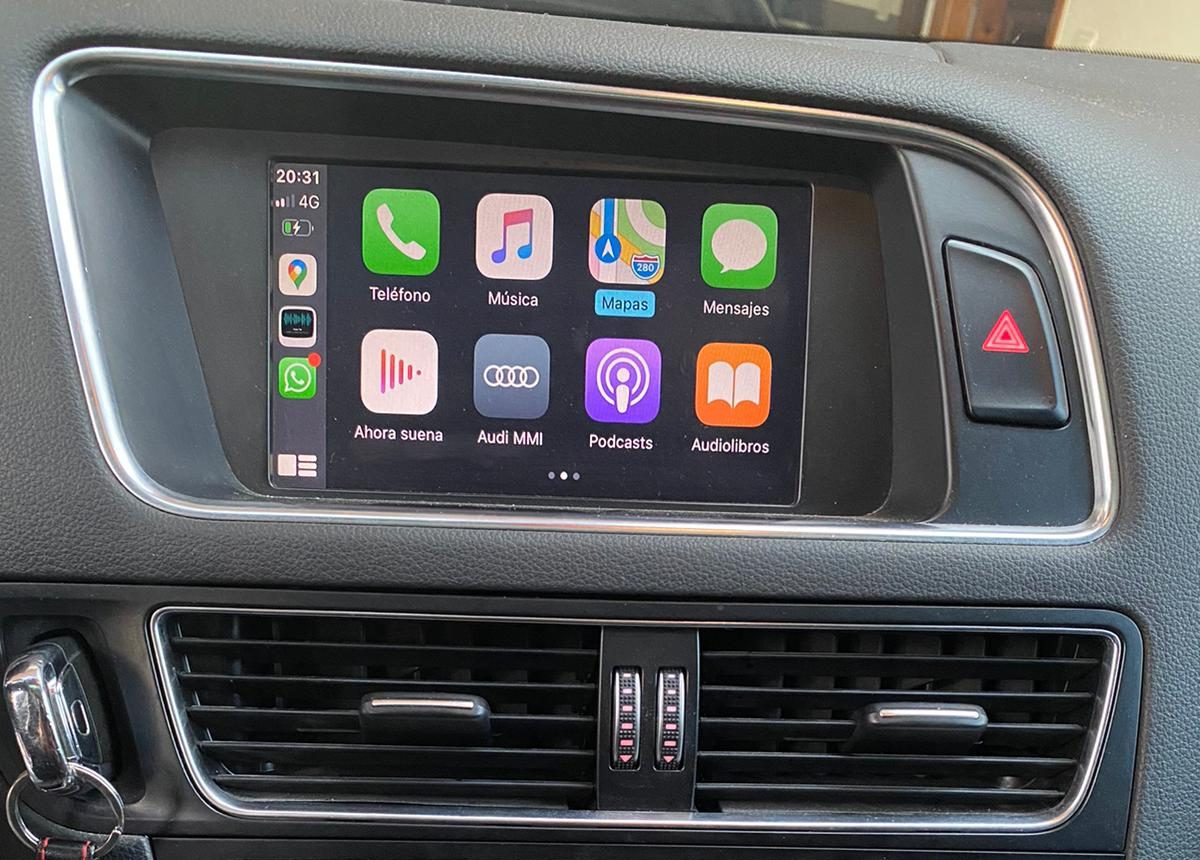
For the first time, car OEMs could integrate real-time navigation, weather and entertainment options into the car cockpit, eliminating the need for third-party devices to connect to those experiences. This innovation gave developers a new channel through which to reach consumers and payments players, and BigTech and FinTechs a new way to attract and monetize that engagement. The connected car also gave OEMs the ability to consider new business models to support an ongoing customer relationship once the car left the dealer’s lot.
Over the last eight years, we’ve seen a tremendous amount of innovation powered by chips to turn cars into connected commerce platforms and the penultimate mobile payments device.
Connected cars and apps now innovate how consumers pay for gas at the pump and trigger orders at QSR drive-thrus. We see innovators using car telematics to turn cars into mobile points of sale to simplify how fleets and fleet drivers pay for fuel at authorized operators and how to finance, manage and reconcile that spend. Voice assistants make hands-on engagement a seamless and safter experience in the car.
Others see the integration of payments into connected car technology to reimagine how car owners finance, register and pay for the servicing of their car at the moment they decide to buy it: linking to their bank for loan origination and underwriting, then registered payments credentials service the loan and pay for purchases made from the car, including insurance, registration, tolls and maintenance.
Autonomous vehicles connected to the internet and the owners’ digital payments credentials will be able to find and park their car on demand, saving the driver time and money, and parking operators the expense of hiring people to park cars and collect payment. Connected car use cases will only proliferate as autonomous and EV-powered vehicles become more mainstream.
These innovative payments wheels all started turning in 2014.
Uber Struts Its Platform Stuff
Uber’s launch in 2009 was lauded for its reliable and efficient way to get around town. No more taxis, no more “broken” card readers in the backs of smelly cabs, no more uncertainty about getting a ride when one was needed and no more having to wait an extra 3 to 5 minutes to pay at the end of the ride, and maybe get hostile reaction trying to pay with a card. The Uber app and invisible payments redefined mobility and the consumer experience in moving from point A to point B in many markets around the world.
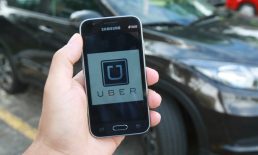
Although ride-hailing was Uber’s first use case, Uber’s real innovation in 2009 was the launch of the gig economy and logistics business model at scale that efficiently matched and priced the supply of drivers with demand by riders in real time at scale. That platform gave Uber the ability to expand more easily and cost effectively into adjacencies at favorable unit economics over time.
In August of 2014 Uber did that with the launch of UberFRESH in Santa Monica. Uber was a late entrant to the online food aggregator business, but its scale of users and drivers gave it a chance to experiment in one market, then to scale nationally — and later globally — using the same supply of drivers and logistics tech that powered the ride-hailing business.
A year later, UberFRESH rebranded as Uber Eats and gave its drivers an additional source of revenue. In 2020 Uber acquired Postmates to further expand its online restaurant footprint and customer base.
Today Uber Eats is the second-largest delivery aggregator behind DoorDash with reported gross revenues in Q2 of $13.9 billion. Like its category competitors, Uber Eats has also expanded into the delivery of convenience store and retail products, and introduced a subscription product to subsidize delivery fees on purchases made using it.
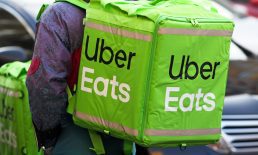
Although online orders through aggregators remain a low-single-digit percent of the number of online orders that restaurants receive, many restaurants use it as a strategic fill-in for off-peak times, and price-optimize orders taken from that channel.
Consumers have also maintained their aggregator ordering habits. According to PYMNTS data, 27 percent of consumers use online ordering, mostly millennials and Gen Z consumers in a hurry to get food they decided to order at the last minute.
Uber’s platform 2014 expansion proved a few things. First, first movers don’t always win. In April of 2014, Grubhub, the leader in U.S. online ordering went public with a valuation of more than $3.2 billion at the close of the market and a reported 70% of the market. Today, it only has about 14% of the market as competitors, including Uber, entered the market, drove margins down and gave restaurants more incentive to invest in innovating their own digital online order and delivery experiences.
Second, business model innovations are powerful, sticky and as important as the technology that powers them — and they make it possible for competitors to traditional players to enter at scale and disrupt. Although Uber competes with individual competitors in each of the sectors it operates, its driver and customer base allows it to scale across the many use cases that require people or products to move from point A to point B at more favorable economics.
Voice Commerce Says Hello
On November 14, 2014, a select group of Prime Members were invited to test a voice-activated cylinder called an Echo and a voice-activated assistant called Alexa. In June of 2015, Amazon made Echo commercially available to everyone. By the end of 2015, Amazon reportedly sold 4.4 million Echo devices.
Most consumers who bought a smart speaker were less interested in the hardware than having access to a voice-assistant named Alexa. This assistant could reliably turn lights on and off, play their favorite music on demand, make their shopping lists, remind them of the things they needed to do, make them look smart in front of their kids by answering trivia questions — even tell them corny jokes.
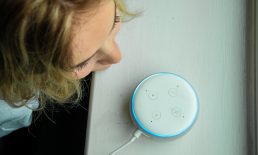
The 2014 Amazon playbook wasn’t to sell hardware, even though the Echo, the Dot and the Show were the onramps to a much larger ambition. It was to get consumers comfortable with talking to a piece of hardware on the kitchen counter that answered back — and to introduce Alexa as the operating system for the connected economy.
In doing that, Amazon introduced the consumer to a new way of connecting with information and brands that used to require a touch or a tap on a keyboard or a physical interaction with a specific piece of hardware to complete. People didn’t need to “fat-finger” a screen or use a keyboard — or find their phone or pop open an app to get information or place an order, track an order, and over time, even pay bills. They could just say what to do and trust that Alexa would just get it done.
Eight years later, there are more than 100,000 Alexa skills, and hundreds of devices and appliances connected to the internet and made smart thanks to Alexa.
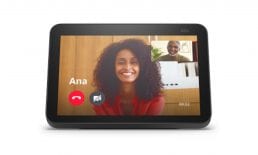
According to PYMNTS data, 25 percent of consumers use their voices to order and pay for things, not only in the U.S. but around the world. Not surprisingly, 39 percent of those users are millennials and 34 percent bridge millennials. Consumers also use the voice-activated apps on their smartphones to complete many routine tasks — such as making purchases, including via the Alexa app, which can be downloaded on an Apple or Android phone. We’ve seen these numbers increase over time, as more retailers voice-activate their ordering experiences. The latest introduction of the Echo Show puts another arrow in that quiver as the combination of Alexa, a screen, and curated “buy with recommendations” help drive more sales.
Eight years later, Amazon’s voice AI operating system is creating the third operating system for commerce, moving consumers and businesses closer to an always-on connected commerce ecosystem that follows the consumer wherever she goes. This operating system will become far more important and far more pervasive as more devices get deployed through the retail and commercial physical space, powered by super-fast 5G.
Apple Launches an In-Store Mobile Wallet
On October 20, 2014, Tim Cook took to the stage and introduced the world to Apple Pay and the promise of never having to root around a purse or leather wallet for a card to pay at the physical point of sale in the store. I remember the date well — it happened to be PYMNTS’ fifth birthday.
Almost eight years later, those plastic cards in those wallets and purses, now contactless, remain the biggest competitor to Apple Pay in store. In the U.S., 39% of consumers paid for their most recent in-store retail purchase using debit cards and 30% using credit cards. In comparison, only 3% paid with Apple Pay. Meaning that more than 10 times more consumers used debit cards and credit cards to pay for their last purchase in store than Apple Pay even as the barriers to adoption and use have largely disappeared. Most stores accept contactless cards, and most iPhones now have Apple Pay installed. In fact iPhone users have to install Apple Pay to complete software upgrades. Yet Apple Pay’s share of overall retail spend in-store remains small, accounting for roughly 2.1% of US retail sales according to PYMNTS’ consumer study of Apple Pay use and adoption conducted in September of 2022.
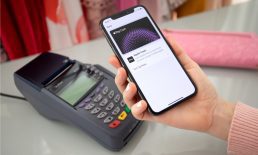
All that said, Apple Pay holds the largest share of all of its mobile wallet competitors in-store – in fact it accounts for roughly half of all mobile wallet use instore. The problem is that not enough people use any mobile wallet to pay in the store, including Apple Pay’s.
For Apple, the problem compounds further since the very best that it could ever hope to get is 100% of every iPhone user’s instore spend — which, according to the latest statistics, is about 50% of the smartphone market in the U.S. This goal is as unlikely as it is improbable, particularly when considering the world’s largest physical retailer (Walmart) and the world’s largest online retailer (Amazon) don’t accept it.
Eight years later the mobile payments foundation that Apple had hoped to create online and in store hasn’t materialized, putting at risk its ambitions to become a mobile payments powerhouse online and in store. The same can be said for any of its mobile wallet competitors. Apple Pay and the others that followed in its footsteps didn’t solve the consumer’s checkout problem, which wasn’t about pulling out a plastic card at checkout. The friction that consumers would like solved is waiting in line to get to the terminal, then waiting for the cashier to scan and bag what was purchased – even navigating the store to find what they wanted to buy in the first place.
The question now for Apple, and every other general purpose mobile wallet, is whether eight years into the adoption and usage experiment, they all just need more time — is the future about waving a phone at a terminal in the store, and we all just need to be patient for most of us to do that?
Or perhaps all the mobile wallets are at risk of being considered legacy tech as the point of sale moves to the cloud, and the consumer’s checkout experience moves along with it.
What’s Next
I started this opus with a quote, and I’ll end with one that is particularly well suited for these times. It is from Peter Drucker and goes something like this:
The relevant question isn’t what to do tomorrow, but what to do today to get to tomorrow.
As innovators plan their 2023 roadmaps, some of the decisions about what to do today can be taken from the experiences of these five innovations, many of which seem so obvious in hindsight.
Technology is only as good as the business model that powers it and the real problems that it solves at scale. Platforms have the power to leverage their assets to disrupt sectors that aren’t on anyone’s radar until it happens. Not everyone can be a platform, even though everyone thinks they can and they should. Most platform wannabes are well-funded features hoping for ignition. Hardware is a means to an end, not the end — whether it’s a car, a phone, a thermostat, a connected bike or a speaker sitting on the counter.
And consumers decide the future. They’ll embrace and use the things that make their life easier, more convenient, and give them back more of their time.
Just as much as they did in 2014 — and probably even more.
